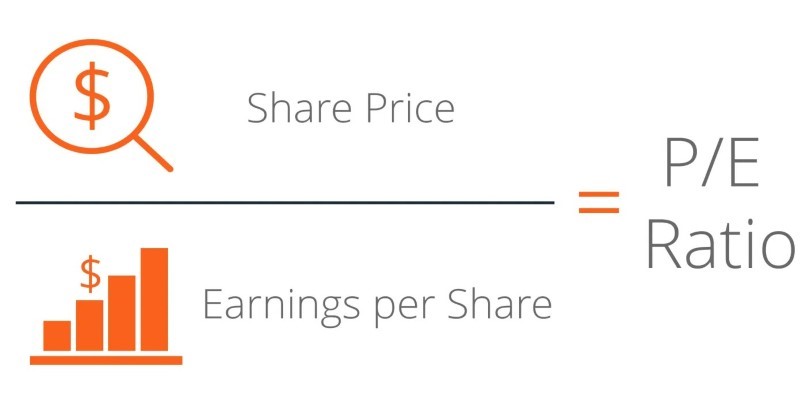Value investing is a strategy investors use to identify undervalued stocks in the market, expecting their actual value to be recognized over time eventually. It is often associated with long-term investing and is considered a conservative approach, especially compared to other speculative strategies like growth investing. If you're new to investing or considering value investing as a strategy, understanding its principles, techniques, and how to approach the market is crucial.
What Is Value Investing?
At its core, value investing revolves around purchasing stocks that appear to be undervalued by the market based on fundamental analysis. These stocks are often priced lower than their intrinsic value, meaning the market has temporarily mispriced them. The theory behind this strategy is that, over time, the market will recognize the company's worth, leading to a rise in stock prices.
Value investors focus on a company's long-term potential. They believe stock prices do not always accurately reflect a company's fundamentals. This mindset allows value investors to buy shares at a discount and hold onto them until the market recognizes their value.
The Philosophy Behind Value Investing
Benjamin Graham, often referred to as the father of value investing, famously articulated the philosophy of value investing. Graham's book The Intelligent Investor outlines the principles of value investing, emphasizing the importance of understanding a company's intrinsic value and purchasing it at a price significantly lower than that value.

According to Graham, intrinsic value is a company's true worth based on its fundamentals, such as earnings, dividends, assets, and liabilities. By focusing on companies with a strong balance sheet, consistent profits, and competent management, value investors aim to identify opportunities where the stock price does not reflect the company's real potential.
Graham also introduced the concept of a "margin of safety." This means an investor should aim for a price lower than the intrinsic value to reduce risk when purchasing a stock. The margin of safety acts as a buffer, ensuring that if the investment does not perform as expected, the downside risk is limited.
How To Identify Value Stocks
Finding value stocks requires financial analysis, research, and patience. Investors use various financial ratios and metrics to assess a stock is undervalued. Some of the most common metrics include:
Price-to-Earnings (P/E) Ratio – The P/E ratio compares a company's stock price to its earnings per share (EPS). A lower P/E ratio than the industry or market average could indicate that the stock is undervalued.

Price-to-Book (P/B) Ratio – The P/B ratio compares a company's market value to its book value (assets minus liabilities). A P/B ratio under one may suggest that the stock is trading below its book value, indicating an undervalued stock.
Dividend Yield – Stocks with a higher dividend yield might be undervalued if the market has temporarily overlooked their long-term potential. Consistent dividend payments are also a sign of a financially stable company.
Debt-to-Equity Ratio measures a company's financial leverage by comparing its total liabilities to shareholders' equity. A lower ratio indicates that the company is less reliant on debt, which reduces financial risk.
Free Cash Flow – Companies with healthy cash flow are more likely to withstand market downturns and reinvest in growth opportunities. If a company generates substantial free cash flow, it could be an attractive investment at a low price.
The Importance Of Patience In Value Investing
One key aspect of value investing is the need for patience. Value investors understand that the market may take time to recognize the actual value of an undervalued stock. Unlike traders who seek to profit from short-term fluctuations, value investors are in it for the long haul, often holding onto stocks for years before they see significant returns.

Patience is crucial because value investing involves taking calculated risks. Sometimes, stocks that seem undervalued may take years to rebound or may not rebound at all. Investors must be prepared for this and avoid making impulsive decisions based on short-term market fluctuations.
Common Mistakes To Avoid In Value Investing

While value investing can be rewarding, it requires careful analysis and a disciplined approach. Beginners often make mistakes that can hinder their success. Some common mistakes include:
Focusing Too Much on Low P/E Ratios—A low P/E ratio alone does not necessarily mean a stock is undervalued. Other factors, such as the company's future growth prospects, industry trends, and competitive position, must also be considered.
Ignoring the Company's Fundamentals—Value investors should not simply look for cheap stocks; they must assess the company's overall financial health. A low-priced stock may be affordable for declining earnings, high debt levels, or poor management.
Chasing Short-Term Gains – Value investing is a long-term strategy. If you are looking for quick returns, you may be better off with other investments, such as growth or momentum investing. Impatience can lead to poor decision-making.
Over-Diversifying – While diversification is essential for managing risk, over-diversification can dilute the potential returns from your investments. Focus on a few strong, undervalued stocks rather than spreading yourself too thin across too many.
The Risks Of Value Investing
While value investing can be rewarding, it is not without risks. The primary risk is that a stock may not reach its perceived intrinsic value. Companies might be undervalued for reasons such as poor management, declining industries, or competitive pressures.

Another risk is that the market may take longer than expected to recognize a stock's value. As a result, value investors must be prepared for long periods of stagnation or underperformance.
Finally, the lack of diversification in a value investing portfolio can increase risk. If a few of your stocks underperform, the entire portfolio may be negatively impacted. Thus, managing your portfolio thoughtfully and maintaining a long-term perspective is essential.
Final Thoughts On Value Investing
Value investing is a timeless investment strategy emphasizing careful analysis, patience, and a long-term perspective. While it requires a deep understanding of financial metrics and identifying undervalued companies, the rewards can be significant over time. For beginners, value investing can offer a solid foundation for building wealth and achieving financial goals.
However, it is essential to remember that value investing is not a get-rich-quick strategy. Success in this field depends on consistently identifying undervalued stocks, understanding the risks involved, and being patient as the market corrects its mispricing. By focusing on companies with strong fundamentals and using a disciplined approach, beginners can begin their journey into value investing with confidence and clarity.





